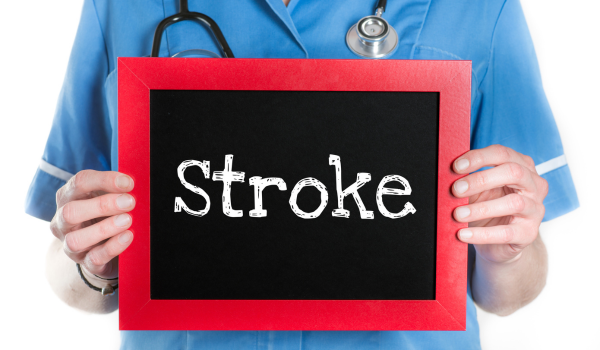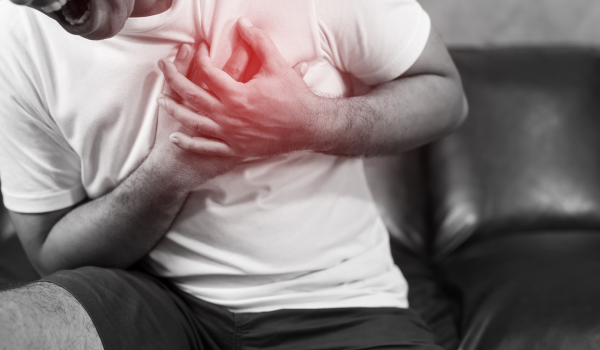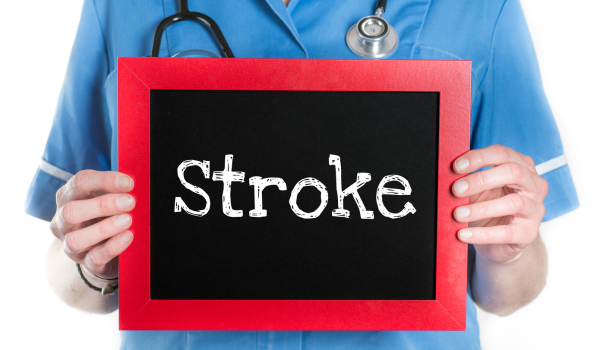.png)
Stroke basics
A stroke occurs when the brain's blood supply is interrupted or reduced, preventing oxygen and nutrients from reaching brain tissue. This can cause brain cells to begin dying within minutes, leading to lasting damage or death if not treated quickly.
There are two main types of stroke:
-
Ischemic stroke – caused by a blood clot blocking an artery to the brain.
-
Hemorrhagic stroke – caused by bleeding into or around the brain.
A transient ischemic attack (TIA), or mini-stroke, is a temporary blockage that typically doesn’t cause permanent damage but is a warning sign of future strokes.
Oxygen deprivation
When a stroke occurs, part of the brain is suddenly deprived of oxygen. Brain cells rely heavily on oxygen to function. Just a few minutes without it begins a cascade of events that damages or kills brain tissue.
Within 3–5 minutes of oxygen deprivation:
-
Neurons begin to fail.
-
Brain signals weaken.
-
Cells release toxic substances that harm neighboring cells.
This lack of oxygen is why “time is brain” – immediate medical help is crucial.
Cell death cascade
As neurons start to die, they release excess glutamate, a neurotransmitter. While glutamate normally helps transmit signals, too much can be toxic – leading to excitotoxicity.
This causes:
-
More cells to become overstimulated.
-
Mitochondrial dysfunction in neurons.
-
The spread of inflammation and swelling.
This cell death cascade continues unless blood flow is restored.
Blood-brain barrier damage
The blood-brain barrier (BBB) is a protective shield that regulates what substances can enter the brain from the blood. During a stroke, the BBB becomes compromised.
As a result:
-
Harmful substances and immune cells enter brain tissue.
-
Swelling, or cerebral edema, worsens.
-
Increased pressure leads to further damage and risk of herniation (brain tissue shifting).
BBB breakdown is especially common in hemorrhagic strokes.
Swelling and pressure
As damaged brain tissue swells, the skull – a rigid, closed space – has no room to accommodate it.
This can cause:
-
Increased intracranial pressure (ICP).
-
Compression of vital brain structures.
-
Reduced blood flow to other areas.
Left unchecked, swelling can be deadly and often requires surgical intervention.
Electrical signal disruption
The brain operates through precise electrical signals. Stroke can disrupt these signals in multiple ways:
-
Neurons can no longer fire properly.
-
Communication between brain regions is severed.
-
Reflexes, speech, coordination, and memory may be impaired.
This is why many stroke survivors experience symptoms like weakness, speech problems, and confusion.
Tissue death zones
In ischemic strokes, the affected brain area is divided into two zones:
-
Core: Where blood flow is completely blocked – cell death happens rapidly.
-
Penumbra: A surrounding area with limited blood flow – salvageable if treated early.
Stroke treatments focus on saving the penumbra before it turns into dead tissue.
Inflammatory response
Stroke triggers a powerful immune response. White blood cells flood into the damaged brain area, releasing inflammatory cytokines.
This can:
-
Cause secondary damage.
-
Extend the area of injury.
-
Delay healing.
While the immune system tries to protect the brain, overactivity can worsen outcomes.
Impact of hemorrhagic stroke
In hemorrhagic strokes, bleeding itself is toxic to brain tissue. Blood is irritating when it leaks outside vessels.
Complications include:
-
Formation of hematomas (blood clots in the brain).
-
Spasms in surrounding arteries (vasospasm).
-
Higher risk of sudden pressure spikes.
The presence of blood in areas like the ventricles or subarachnoid space increases the chance of long-term disability.
Cognitive and emotional changes
Brain damage during a stroke doesn’t just affect movement or speech – it also alters cognition and emotion.
Depending on which brain region is damaged, survivors may experience:
-
Memory loss.
-
Trouble concentrating.
-
Personality shifts.
-
Depression or anxiety.
The brain is responsible for how we think and feel – so even small areas of damage can have a profound impact.
Stroke and the brainstem
If a stroke affects the brainstem, it can be especially dangerous. The brainstem controls vital functions like breathing, heartbeat, and consciousness.
Damage here may result in:
-
Coma or loss of consciousness.
-
Inability to breathe without a ventilator.
-
Loss of motor and sensory functions in the entire body.
Brainstem strokes are among the most life-threatening.
Neuroplasticity and healing
Though stroke causes irreversible damage to some brain tissue, the brain has a remarkable ability called neuroplasticity.
Neuroplasticity allows:
-
Undamaged parts of the brain to take over lost functions.
-
Creation of new neural pathways.
-
Gradual improvement with rehab and therapy.
This process takes time and effort, but many survivors regain important abilities.
Recovery phases
After a stroke, the brain goes through several recovery phases:
-
Acute phase: First few days – stabilization, preventing further damage.
-
Subacute phase: Weeks to months – focused rehab and neuroplasticity.
-
Chronic phase: Ongoing – long-term adjustments and life planning.
Each phase is essential for optimizing outcomes.
FAST warning signs
Recognizing a stroke early increases the chance of recovery. Use the FAST acronym:
-
Face drooping
-
Arm weakness
-
Speech slurred
-
Time to call emergency services
Acting fast can literally save brain tissue – and a life.
When to seek emergency help
Call emergency services if you or someone experiences:
-
Sudden numbness or weakness in face, arm, or leg.
-
Trouble speaking or understanding.
-
Sudden trouble seeing.
-
Dizziness or loss of balance.
-
Sudden severe headache.
Never wait and see – brain damage progresses every minute.
Long-term impact
Stroke can lead to long-term physical, cognitive, and emotional changes, including:
-
Paralysis or weakness.
-
Speech and language issues.
-
Memory loss.
-
Depression.
-
Dependency on caregivers.
Rehabilitation can improve function, but some effects may be permanent.
Conclusion
A stroke is a true neurological emergency, and its effects on the brain are devastating. Oxygen deprivation, swelling, inflammation, and bleeding all contribute to irreversible damage. But with rapid treatment, rehabilitation, and support, survivors can regain independence and quality of life.
.png)
.png)
.png)
.png)
.png)
.png)
.png)
.png)
.png)
.png)
.png)
.png)
.png)
.png)








